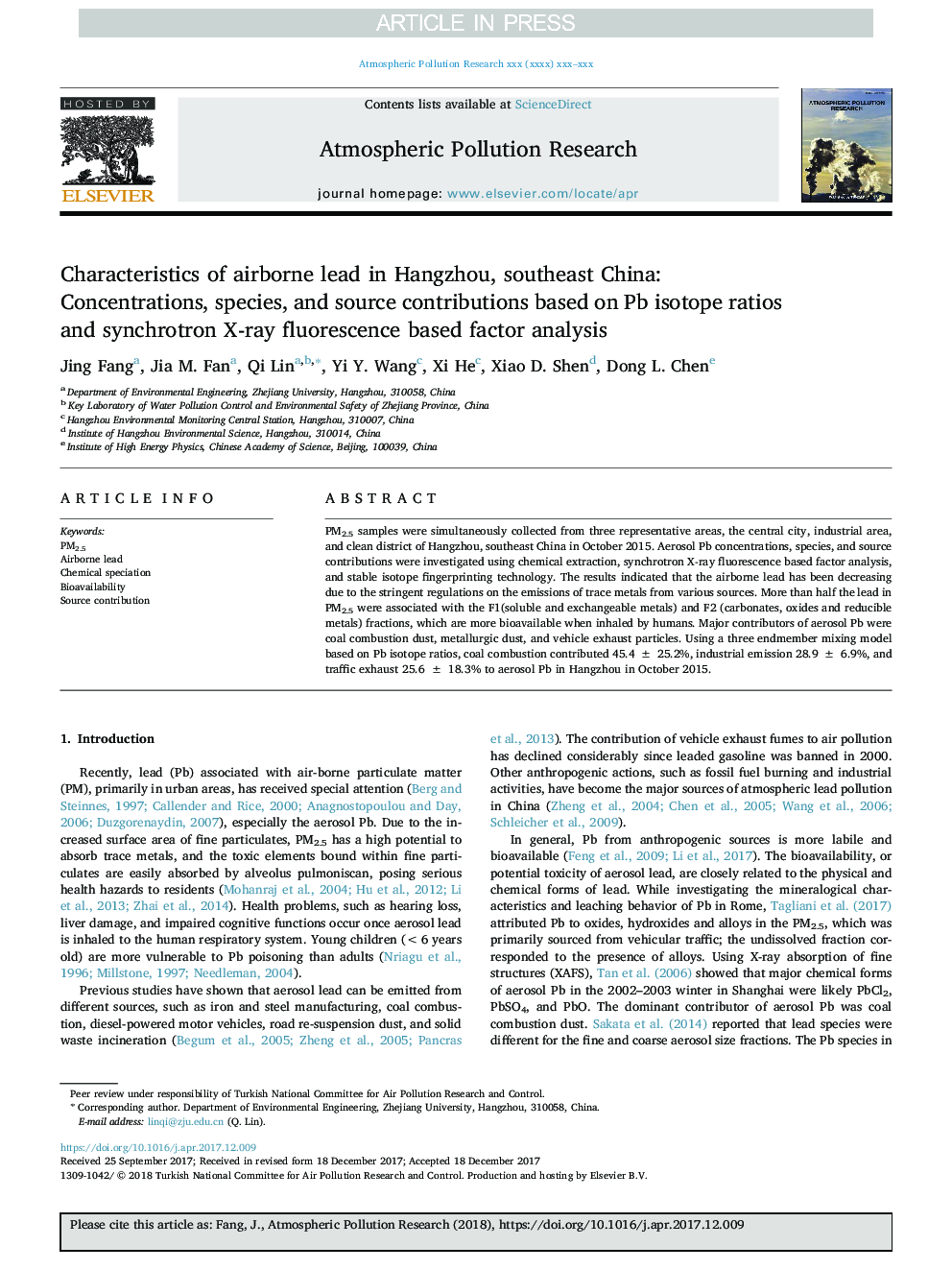| Article ID | Journal | Published Year | Pages | File Type |
|---|---|---|---|---|
| 8862606 | Atmospheric Pollution Research | 2018 | 10 Pages |
Abstract
PM2.5 samples were simultaneously collected from three representative areas, the central city, industrial area, and clean district of Hangzhou, southeast China in October 2015. Aerosol Pb concentrations, species, and source contributions were investigated using chemical extraction, synchrotron X-ray fluorescence based factor analysis, and stable isotope fingerprinting technology. The results indicated that the airborne lead has been decreasing due to the stringent regulations on the emissions of trace metals from various sources. More than half the lead in PM2.5 were associated with the F1(soluble and exchangeable metals) and F2 (carbonates, oxides and reducible metals) fractions, which are more bioavailable when inhaled by humans. Major contributors of aerosol Pb were coal combustion dust, metallurgic dust, and vehicle exhaust particles. Using a three endmember mixing model based on Pb isotope ratios, coal combustion contributed 45.4 ± 25.2%, industrial emission 28.9 ± 6.9%, and traffic exhaust 25.6 ± 18.3% to aerosol Pb in Hangzhou in October 2015.
Related Topics
Physical Sciences and Engineering
Earth and Planetary Sciences
Atmospheric Science
Authors
Jing Fang, Jia M. Fan, Qi Lin, Yi Y. Wang, Xi He, Xiao D. Shen, Dong L. Chen,
